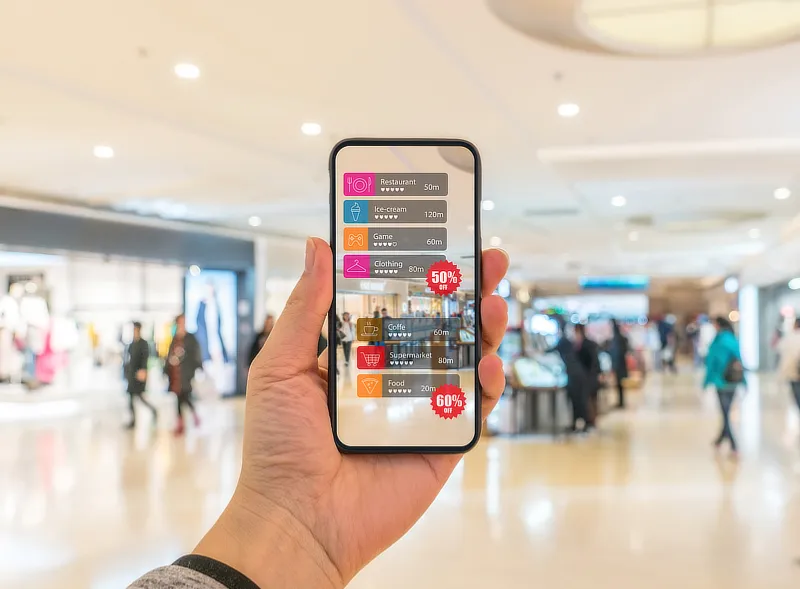Imagine being able to interact with advertisements in a whole new way, where the line between the virtual and physical world blurs. Augmented Reality (AR) ads have taken the advertising industry by storm, offering innovative and captivating experiences for consumers. In this article, we will explore some fascinating case studies that showcase the creative and memorable uses of AR in advertising.
One notable example is a campaign by a leading cosmetics brand that employed AR to transform their print ads into interactive experiences. By simply scanning the ad with their smartphone, users were transported into an immersive virtual world where they could try on different shades of lipstick or experiment with various makeup looks. This not only engaged consumers like never before but also allowed them to make more informed purchasing decisions.

Another remarkable use of AR in advertising comes from a popular furniture retailer. They developed an app that enabled customers to visualize how their furniture would look in their own homes before making a purchase. By simply pointing their phone's camera at an empty space, users could place virtual furniture items and see how they fit within their existing décor. This not only eliminated any doubts about size or style but also provided an entertaining and engaging shopping experience.
Additionally, we cannot overlook the impact of memorable AR ad campaigns such as those created by leading fast-food chains or automotive companies. These brands have successfully leveraged AR technology to create interactive experiences that leave lasting impressions on consumers' minds. From virtual test drives of new car models to animated mascots dancing on table tops at restaurants, these campaigns elevate traditional advertising methods and bring products to life in ways previously unimaginable.
AR ads have proven themselves as game-changers in the realm of advertising by offering innovative uses and creating unforgettable experiences for consumers. With these captivating campaigns capturing attention and driving engagement, it's clear that augmented reality has become a powerful tool for brands seeking to make a lasting impact on their target audience.
How to Create Branded AR Experiences
Creating branded AR experiences requires a strategic approach to ensure that your AR campaign effectively engages audiences. Start by defining your objectives within the broader context of your marketing campaign. Use AR advertising as a compelling marketing tool to enhance brand awareness and create memorable interactions. For instance, incorporating QR codes in your out-of-home (OOH) advertising, such as billboards, allows users to scan and launch an AR app that brings your brand to life. Examples like Burger King and the Pokémon Go phenomenon showcase how augmented reality marketing can turn passive viewers into active participants.
To create an augmented reality experience, consider using web AR or immersive AR technologies that allow users to interact with your brand through their smartphones. For instance, an AR game can provide an engaging way for users to explore your brand's storyadvertising campaign whileadvertising campaign encouraging social sharing. Look at augmented reality campaigns like Rock Paper Reality for inspiration. These advertising examples illustrate how to change the screen's AR visuals dynamically, making the experience unique and interactive. The next wave of augmented and virtual reality marketing will rely heavily on creating memorable, mixed reality experiences that resonate with consumers.
Digital Branding vs Digital Marketing
In the world of digital engagement, digital branding and digital marketing serve distinct yet complementary purposes. Digital branding focuses on creating a unique identity and emotional connection with consumers, while online marketing encompasses the strategies and tools used to promote products or services. An emerging trend in this space is virtual reality marketing, which leverages augmented reality technology to create immersive experiences that enhance brand awareness. For instance, brands like Burger King have utilized AR advertising by integrating AR apps into their campaigns, granted users to scan a QR code and interact with their products in a virtual space. One notable example is the Pokémon Go phenomenon, which showcases how virtual overlay marketing can effectively engage audiences through interactive gameplay.
Moreover, out-of-home (OOH) advertising has evolved to include interactive AR experiences, such as billboard displays that change the screen's AR visuals based on user interaction. These commercial samples not only captivate viewers but also encourage them to participate actively in the marketing campaign. For example, a brand could create an enhanced reality game that users can play while waiting at a bus stop, turning a mundane moment into an engaging promotional opportunity. The integration of web-based AR further allows brands to reach consumers across platforms, making mixed reality experiences accessible to a wider audience. Ultimately, the combination of these digital strategies can yield powerful results in brand recognition and customer loyalty, making them invaluable tools in the next generation of marketing.
WebAR Retail Advertising Campaign
In recent years, augmented reality marketing has revolutionized the way brands engage with consumers, especially through WebAR retail advertising campaigns. By leveraging augmented reality technology, brands like Burger King have created unique AR campaigns that enhance brand awareness. These advertising examples often involve out-of-home (OOH) placements such as billboards that encourage users to scan a QR code and access an AR app.
This immersive AR experience can include interactive AR games reminiscent of popular phenomena like Pokémon Go, allowing consumers to engage with products in a playful way. Innovative augmented reality campaigns not only captivate audiences but also provide a powerful marketing tool to drive traffic and sales. As brands continue to explore hybrid reality and virtual reality, the potential for augmented and virtual experiences will only grow, changing the way we perceive interactive advertising and traditional marketing strategies.
Related Pages
Start a successful augmented reality advertising campaign today!
Call now +44 (0) 7798 834 159

